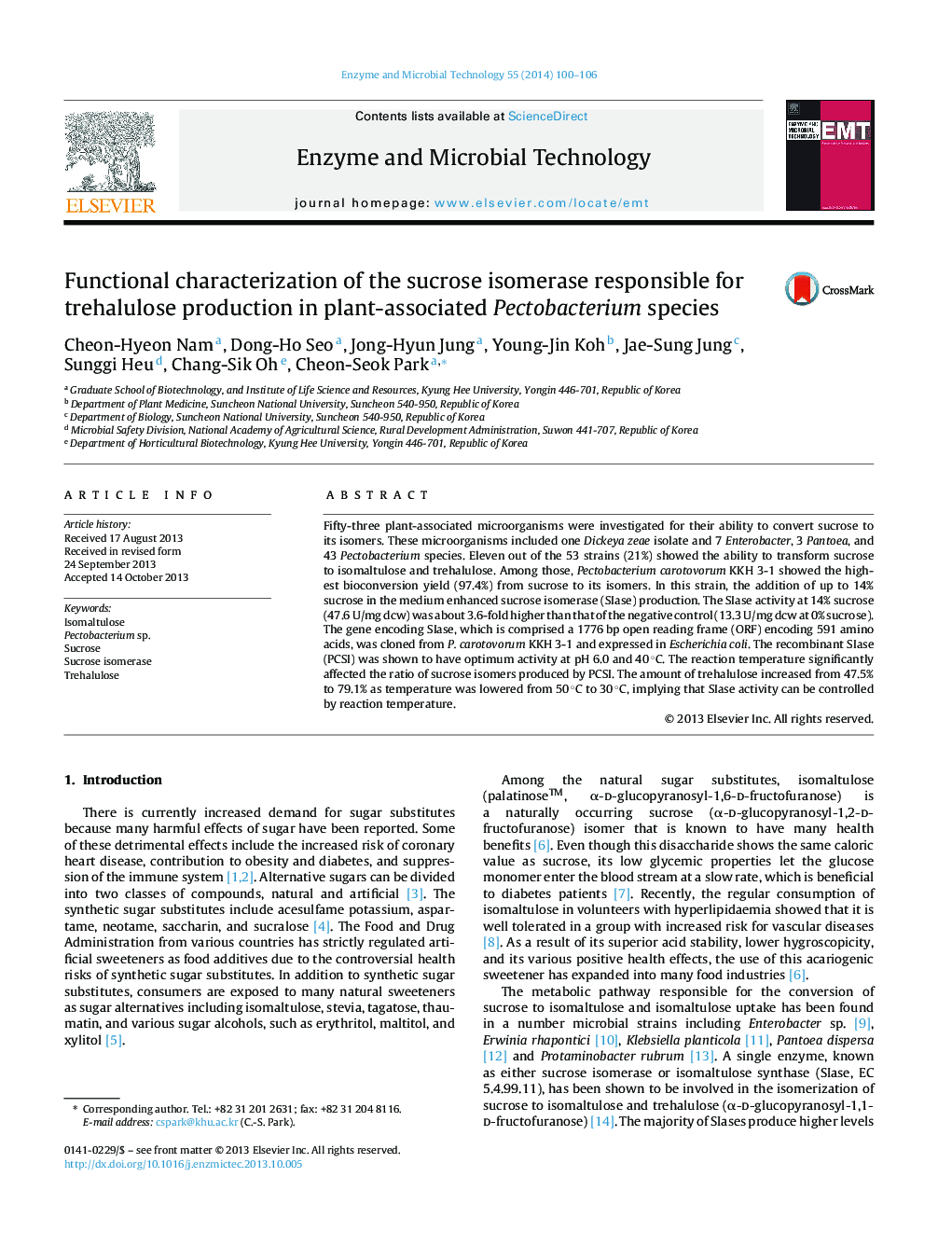| Article ID | Journal | Published Year | Pages | File Type |
|---|---|---|---|---|
| 17236 | Enzyme and Microbial Technology | 2014 | 7 Pages |
•Eleven out of the 53 plant-associated microorganisms (21%) showed the ability to transform sucrose to isomaltulose and trehalulose.•Pectobacterium carotovorum KKH 3-1 showed the highest bioconversion yield (97.4%) from sucrose to its isomers.•P. carotovorum KKH 3-1 produced more trehalulose (79%) than isomatulose (21%) at 30 °C.•The addition of up to 14% sucrose in the medium enhanced sucrose isomerase (SIase) production.•The reaction temperature significantly affected the ratio of sucrose isomers produced by the SIase of P. carotovorum KKH 3-1.
Fifty-three plant-associated microorganisms were investigated for their ability to convert sucrose to its isomers. These microorganisms included one Dickeya zeae isolate and 7 Enterobacter, 3 Pantoea, and 43 Pectobacterium species. Eleven out of the 53 strains (21%) showed the ability to transform sucrose to isomaltulose and trehalulose. Among those, Pectobacterium carotovorum KKH 3-1 showed the highest bioconversion yield (97.4%) from sucrose to its isomers. In this strain, the addition of up to 14% sucrose in the medium enhanced sucrose isomerase (SIase) production. The SIase activity at 14% sucrose (47.6 U/mg dcw) was about 3.6-fold higher than that of the negative control (13.3 U/mg dcw at 0% sucrose). The gene encoding SIase, which is comprised a 1776 bp open reading frame (ORF) encoding 591 amino acids, was cloned from P. carotovorum KKH 3-1 and expressed in Escherichia coli. The recombinant SIase (PCSI) was shown to have optimum activity at pH 6.0 and 40 °C. The reaction temperature significantly affected the ratio of sucrose isomers produced by PCSI. The amount of trehalulose increased from 47.5% to 79.1% as temperature was lowered from 50 °C to 30 °C, implying that SIase activity can be controlled by reaction temperature.
